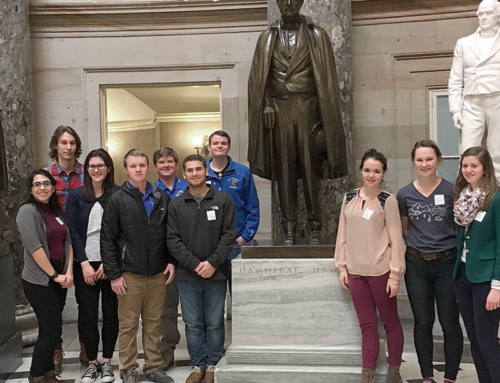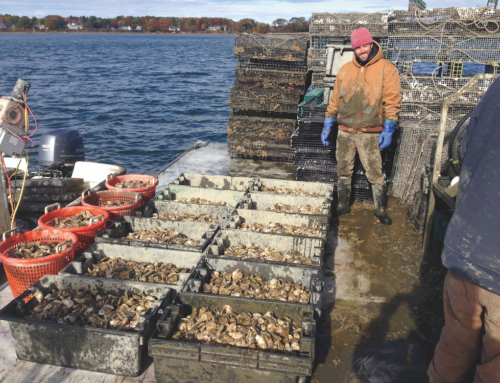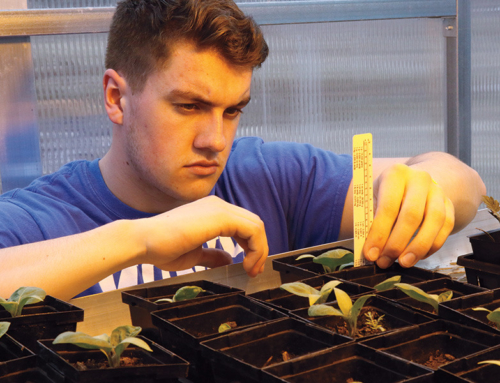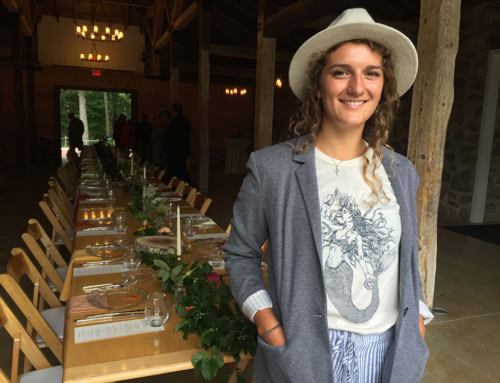Olivia Marable ’18 on her sea star propagation research internship
By Patricia Erikson
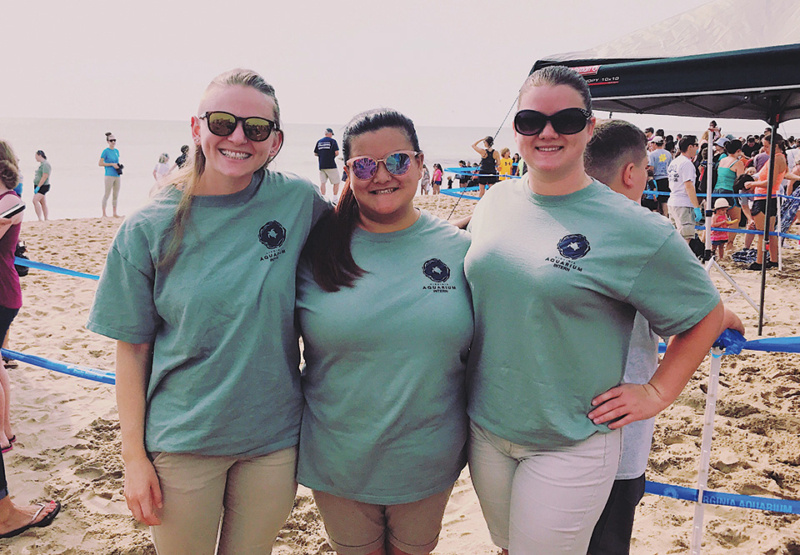
Olivia Marable ’18 (center) with two other aquarium interns on the beach at the release of a rehabilitated sea turtle.
Olivia Marable ’18 of Buffalo, New York (Marine Science major with minors in Environmental Science and Sustainability Studies), enjoyed an opportunity to conduct research on sea star propagation while working as an intern for ten weeks in the fisheries department at the Virginia Aquarium and Marine Science Center in Virginia Beach. Her research addressed the dying off of sea stars due to the “sea star wasting disease.” Lesions first appear on the sea star, followed by rapid fragmentation of the body that leads to death. The disease has crippled sea star populations, particularly from Baja California to Alaska. Although the cause is still being researched, it appears that bacteria and warming ocean temperatures are contributors.
Olivia explained, “The aquarium doesn’t want to take any more sea stars from an already decreasing population; they want to figure out a way to raise them in the aquarium under certain conditions.
“My project researched how many sea stars could survive under controlled pH levels, temperature, and salinity levels under the conditions at the aquarium. I had to collect sperm and eggs from mature sea stars, fertilize the eggs, and count hundreds of embryos to then sort into different controlled holding tanks. Sadly, none of them survived, but this was only the first time that the Virginia Aquarium has attempted this method that has been developed elsewhere.”
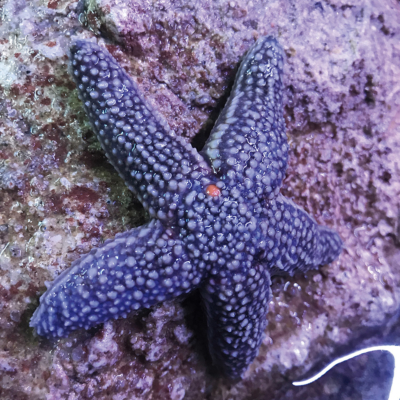
One of the five mature sea stars that Olivia used to carry out her sea star propagation research at the Virginia Aquarium and Marine Science Center in Virginia Beach, VA. Photo: Olivia Marable.
Not all of her work involved research. Olivia worked long hours for five days of the week in the Cold Water Gallery. Daily, she fed jellyfish (both moon and nettle), baby moon jellies, coral, tang, one female octopus, lion fish, sea urchins, sea stars, conch, a giant lobster, baby cat sharks, and adult cat sharks. She also sent water samples to the lab, performed exhibit maintenance, cleaned protein skimmers, performed octopus enrichments, completed water changes, and helped wherever she was needed. Some of the most exciting opportunities involved watching the release of rehabilitated sea turtles back into the ocean and helping to capture jellyfish in a nearby bay.
Olivia said, “I am going to apply to the aquarium for a part-time job soon and hopefully I will be working there once I graduate.” She hopes to eventually work in a place like Hawaii on marine mammal rehabilitation, while also focusing on addressing plastic pollution, rising ocean temperatures and other threats to the ecosystem.
